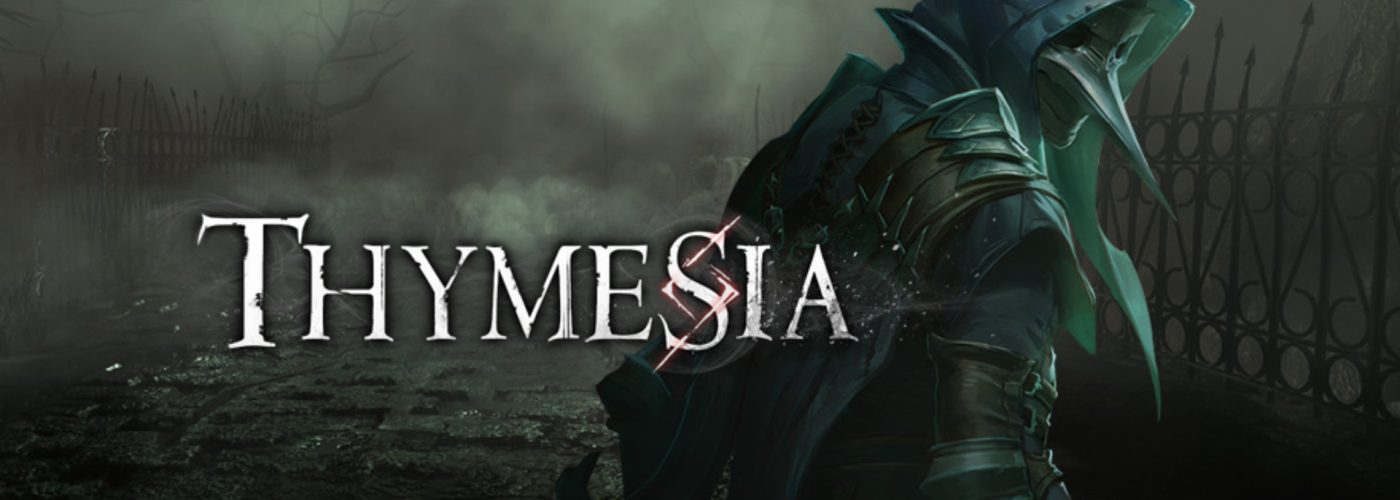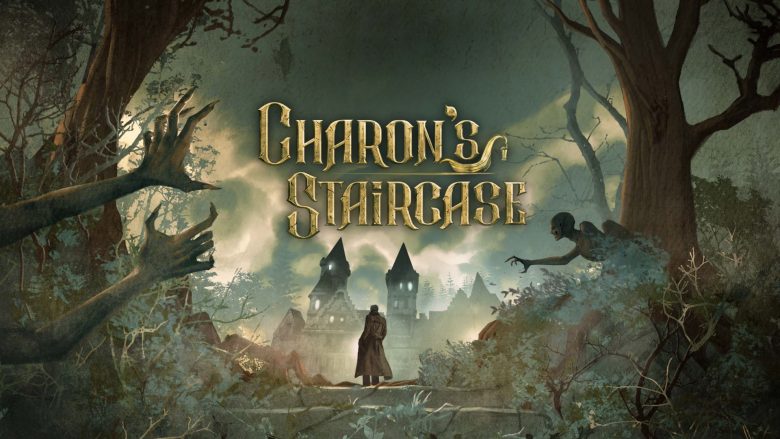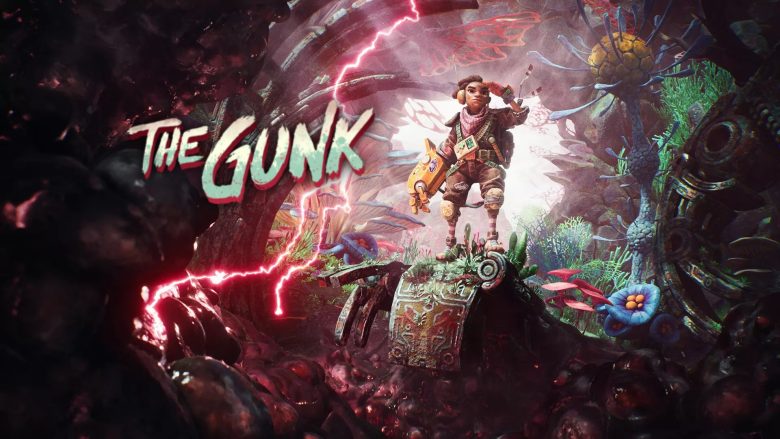When corruption is power, and redemption is born of pain.
Thymesia is a dark fantasy action RPG firmly rooted in the soulslike tradition, yet it succeeds in forging an identity all its own amid the countless heirs to Dark Souls. Its premise is immediately clear: the player is thrust into a world on the brink of collapse, ravaged by a mysterious plague that has twisted both its inhabitants and the very landscape into something hostile and grotesque. The atmosphere is relentlessly oppressive – crumbling castles, cursed cities, and malformed creatures create a setting that constantly teeters between haunting beauty and decay.
The game rests on three key pillars: strategic combat, intricate exploration, and character progression through unique upgrades and abilities. Rather than relying on a linear story or lengthy dialogue, Thymesia takes a more atmospheric approach. Its narrative gradually unfolds through environmental storytelling, enemy design, and subtle details scattered throughout the world. This choice deepens immersion, making every discovery feel earned and meaningful to players who pay attention to the smallest clues.
At its core, Thymesia lives and dies by its combat system. Precision dodging, fluid attack chains, and the tactical use of special abilities form the foundation of its gameplay. Success demands more than brute force – it calls for observation, timing, and careful management of limited resources. Each encounter becomes a puzzle of patterns and opportunities, rewarding patience and mastery. Few things are as satisfying as toppling a formidable boss after dozens of hard-fought attempts.
Developed by OverBorder Studio, a small independent team from Taiwan, and published by Team17 – renowned for supporting inventive indie projects – Thymesia stands as a testament to what focused vision and creative ambition can achieve. This partnership has allowed the game to retain its artistic edge while reaching a global audience across multiple platforms. Released in 2022 for PC (Steam), PlayStation 5, and Xbox Series X|S, Thymesia leverages the power of next-gen hardware to deliver hauntingly beautiful lighting, dynamic particle effects, and evocative creature designs that reinforce its grim aesthetic.
What truly sets Thymesia apart within the soulslike genre is its distinctive identity. While it shares familiar foundations, its blend of dark atmosphere, brisk and reactive combat, and the inventive “corruption” system – where power comes at the cost of decay – gives it a flavour all its own. This mechanic introduces a layer of tactical depth, forcing players to weigh risk against reward in every encounter.
Ultimately, Thymesia delivers an intense, brooding, and rewarding experience – one crafted for players who relish challenge, delight in exploring ruined worlds, and enjoy piecing together fragmented lore. Despite its modest budget compared to AAA productions, its distinctive art direction, fluid combat, and cohesive worldbuilding make it a standout title that more than earns its place in the genre.
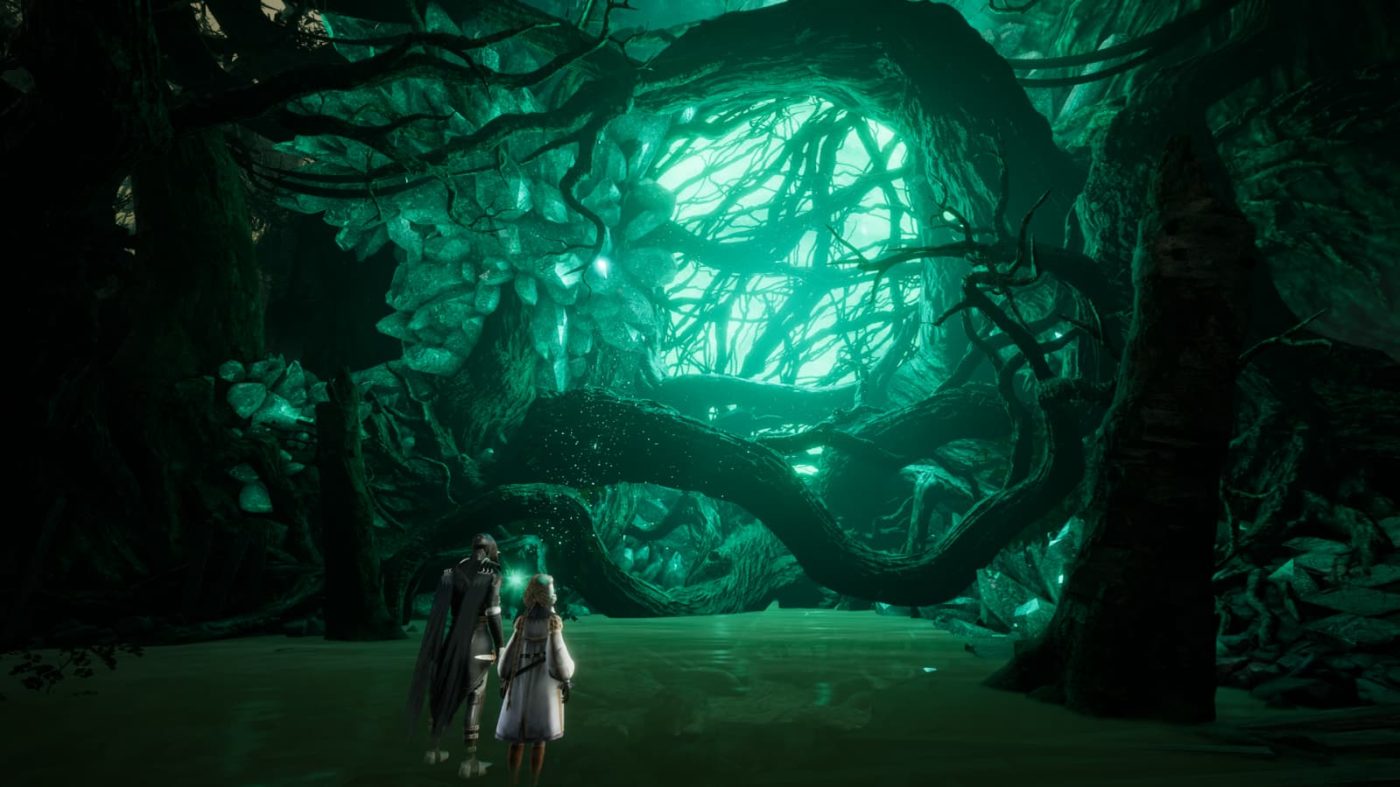

OverBorder Studio: The Team Behind Thymesia
The studio behind Thymesia is OverBorder Studio, a small independent developer based in Taiwan. Despite its youth and modest size, the team brings experience from a variety of prior projects, with expertise spanning combat design, emergent storytelling, and 3D art. Their decision to tackle a dark fantasy, soulslike action RPG demonstrates both ambition and a deep respect for a demanding genre – celebrated for its depth yet fiercely competitive. Rather than merely following established conventions, OverBorder sought to reinterpret them through a unique and distinctly personal creative lens.
As a relatively small team, OverBorder made deliberate, thoughtful decisions across both technical and artistic fronts. Their focus was on visual coherence and immersion: every environment, enemy, and boss is designed not merely to impress, but to tell a story, signal danger, and evoke emotion. Photorealism was never the goal; instead, they crafted a cohesive, expressive world where atmosphere takes precedence. This stylistic approach also reflects a pragmatic handling of resources – prioritizing mood, tone, and identity to overcome the limitations of an indie budget while standing out among larger competitors.
The publisher, Team17, is renowned for championing creative, independent projects and helping small teams bring innovative games to a global audience. Their involvement gave Thymesia international distribution, technical support, and worldwide exposure – without compromising the game’s artistic integrity or core vision.
Perhaps the most notable aspect of Thymesia’s development lies in its underlying philosophy.. OverBorder sought to craft a focused, immersive experience, deliberately setting aside optional features that could have diluted the game’s identity or overextended its scope. Team17 fully supported this vision, acting not just as a distributor, but as a creative and strategic partner. The result is a game with a strong sense of character and a distinctive aesthetic – born from the synergy of a passionate, ambitious indie team and a publisher skilled at nurturing originality.
This partnership shaped every element of Thymesia’s design – its challenging combat, unsettling and cohesive worldbuilding, and bold visual style – all coming together to make a lasting impression on the dark fantasy soulslike genre.
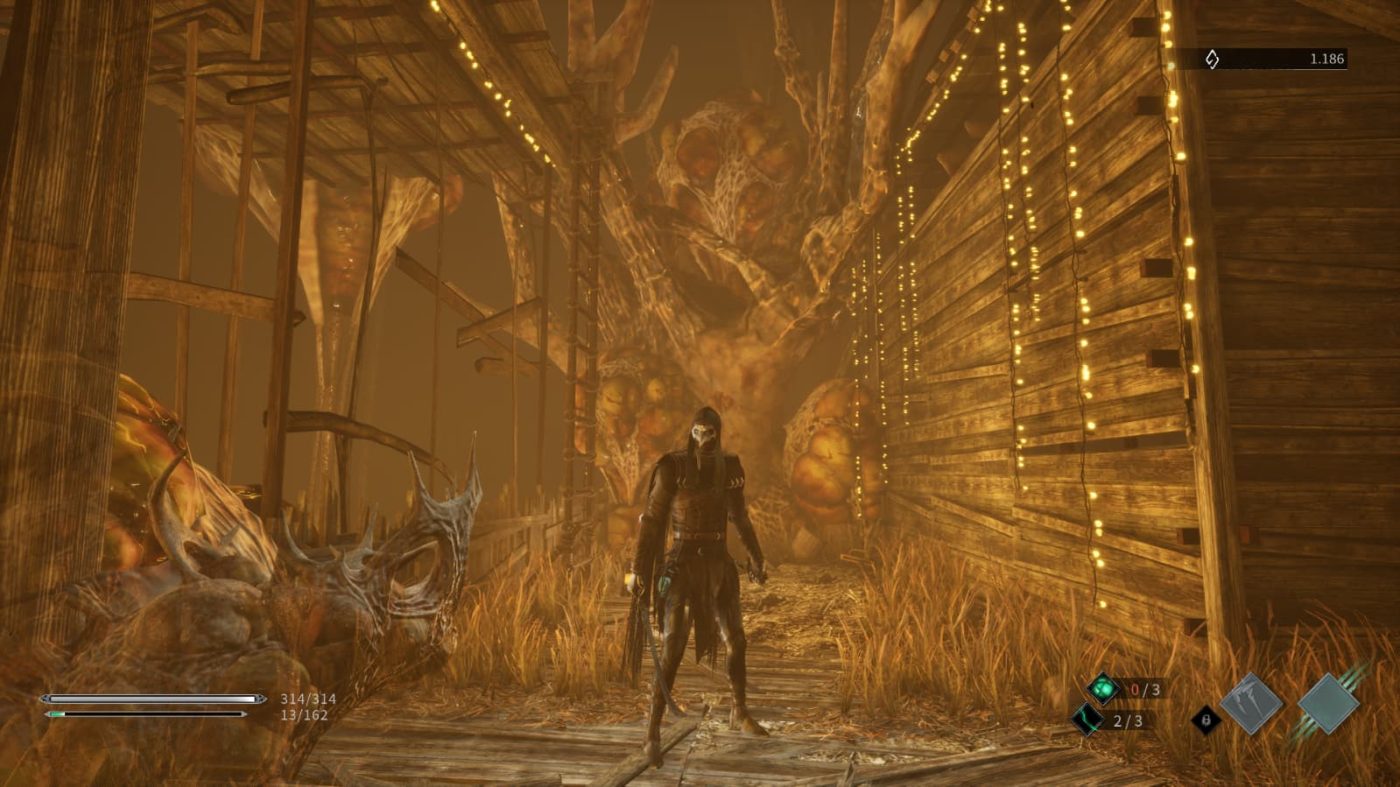
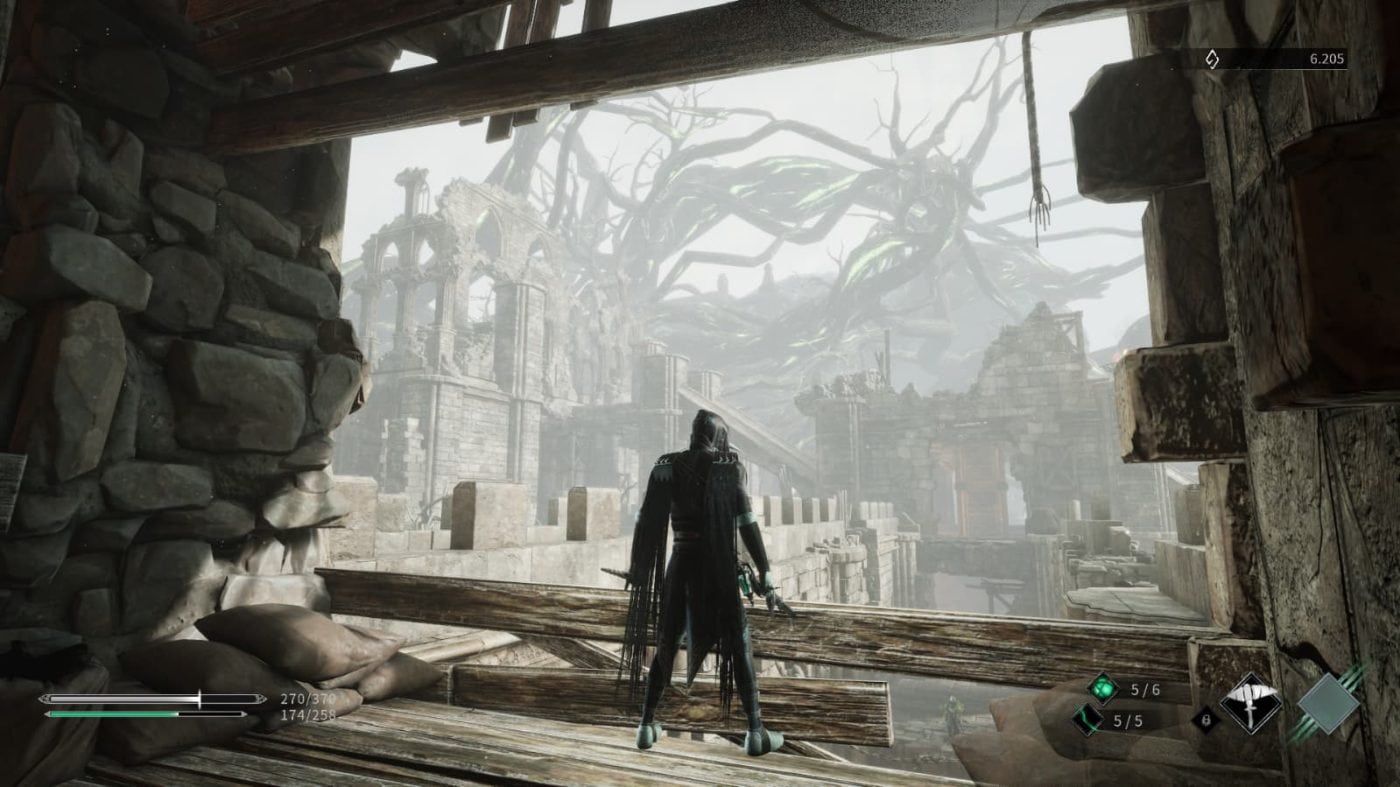
A Raven in the Darkness
Thymesia unfolds in a dark and decaying world, where humanity is threatened by a mysterious plague that has corrupted both people and land, turning the realm into a hostile and lethal environment. Players take on the role of Corvus, a mute protagonist stripped of his most vital memories, whose primary goal is to survive and uncover the origins of a devastating epidemic that has torn apart the Order he once served and the kingdom he inhabits.
The narrative is deliberately fragmented. Rather than relying on lengthy dialogues or cutscenes, Thymesia tells its story through its environments, scattered clues, documents, and limited interactions. Players must interpret what they see, piecing together the plot from subtle visual and auditory cues. This approach deepens the sense of mystery while fostering an atmosphere of isolation and paranoia, emphasizing personal discovery over linear storytelling.
The main setting – a kingdom in ruin – reflects the plague’s contamination and the dark forces now at play. Corrupted castles, deserted streets, abandoned laboratories, and poisoned forests silently convey the moral and physical decay of society, without the need for overt explanation. Deprived of memory and meaningful human contact, Corvus must rely entirely on his own skills and the gradual recovery of fragments of knowledge left behind by the few survivors – or even by his enemies themselves.
The game’s antagonists are not merely monstrous creatures; they are manifestations of corruption and disease, brought to life through unique bosses and enemies, each carrying its own implicit and symbolic story. These foes embody both moral and physical decay, representing the extreme consequences of the epidemic. Every boss encounter is more than a test of skill – it is a narrative moment that allows players to grasp the full impact of the plague on the game’s world.
Memory and identity lie at the heart of Thymesia. Corvus has lost the most crucial fragments of his past, and his quest for truth is equally a journey of self-discovery – a reconstruction of his identity through trials, combat, and recovered knowledge. This layer adds depth to the story, giving the player’s progression a personal resonance that intertwines with the constant threats posed by enemies and the environment alike.
Thymesia aims to deliver an immersive and unsettling experience, where an ever-present sense of mystery, constant danger, and the moral and physical decay of the world converge to form a narrative framework that mirrors the game’s punishing gameplay and haunting atmosphere. Its fragmented storytelling, combined with an enigmatic protagonist, reinforces the impression of a dark, oppressive universe, where survival and discovery stand as the twin pillars of the player’s journey.


The Unseen and the Unknown
The narrative of Thymesia stands out for the way it weaves dark fantasy, horror, and personal drama into a soulslike framework. Eschewing extensive dialogue and fully fleshed-out secondary characters, the game communicates its story and themes through its environments, creatures, and the unfolding journey of its protagonist. This minimalist approach channels the player’s attention toward atmosphere and symbolism, creating a narrative that is both rich and unobtrusive.
Corruption stands as one of the story’s central themes, explored on multiple levels. On one hand, the kingdom is ravaged by a plague that transforms humans and wildlife into monstrous forms; on the other, moral and political decay seeps through society, evident in the collapse of order and the betrayal of once-cherished values. Every boss and enemy encountered becomes a symbol of this contamination, embodying the visible consequences of disease and corruption on both life and civilization.
Memory and identity are equally pivotal in Corvus’ journey. The loss of his memories serves not merely as a narrative device, but as a thematic lens through which the fragility of the individual is examined in a world succumbing to decay. Each fragment of memory recovered, every revelation about the kingdom’s fate, allows the protagonist to reconstruct a sense of self and purpose. In this way, exploration transforms into a journey of personal discovery, where gameplay progression mirrors the character’s narrative growth.
Sacrifice and survival emerge as recurring motifs. Thymesia’s world is relentlessly hostile: death strikes swiftly, resources are scarce, and every encounter demands careful, strategic consideration. This constant tension ensures that every step and decision carries real weight. In this way, survival becomes a concrete narrative theme, allowing players to experience firsthand the fragility of life in a corrupted and perilous realm.
Violence and the body form another key thematic thread. The physical mutations of creatures, the brutality of combat, and the use of organic or tainted weapons forge a direct link between gameplay and narrative: suffering, deformity, and corruption become visible and visceral, communicating key story elements without the need for words. This harmony between mechanics and theme strengthens the game’s identity and deepens its emotional impact.
Finally, loneliness and isolation permeate every stage of the experience. Corvus frequently stands alone in a ravaged world, confronting enemies far stronger and more numerous than himself. This pervasive solitude heightens tension and immersion, allowing players to keenly sense both his vulnerability and the weight of the responsibility he bears.
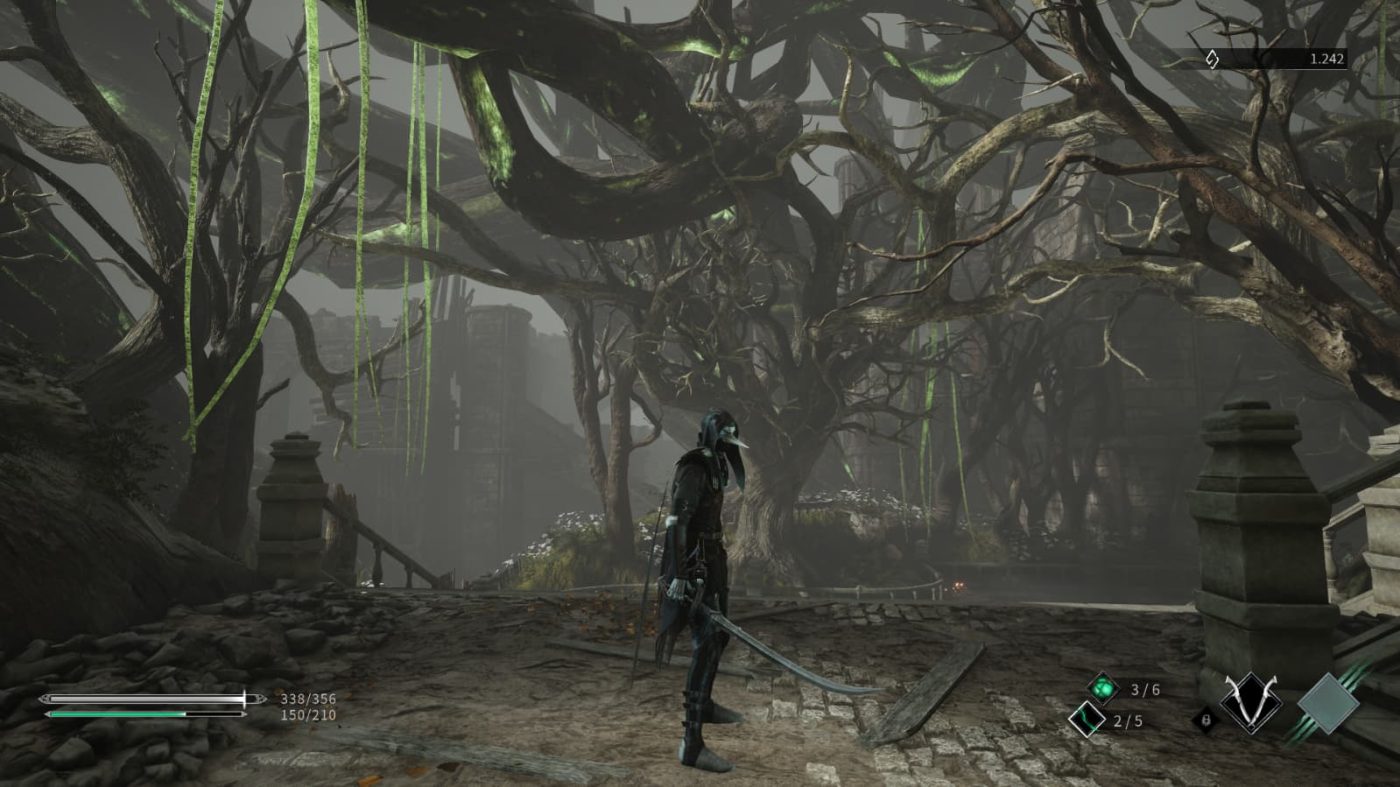
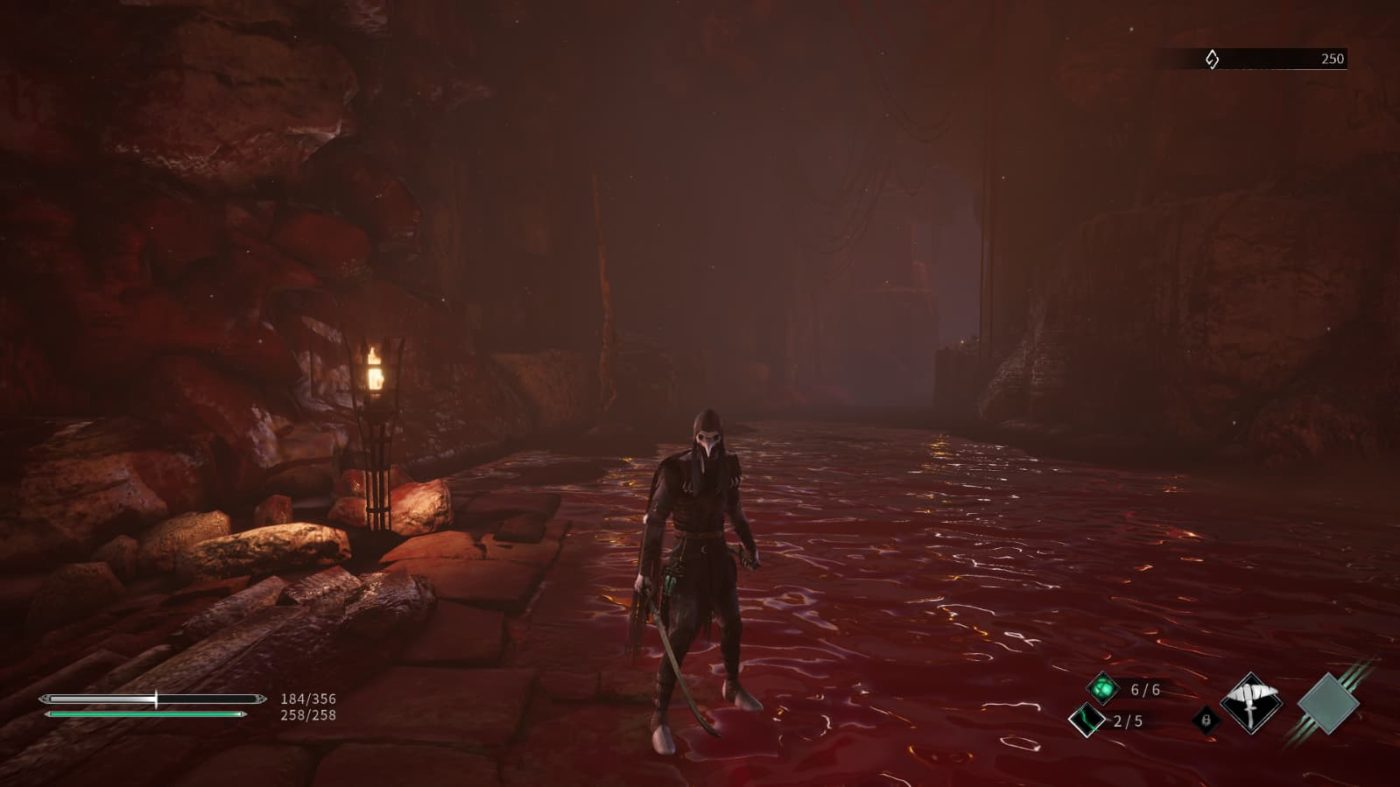
Stable and Smooth Performance
The technical execution and art direction of Thymesia are among the game’s most impressive features, playing a crucial role in shaping a believable and immersive dark-fantasy universe. OverBorder developed the title using Unreal Engine, a versatile game engine that delivers high-quality lighting and particle effects, producing richly detailed environments, sophisticated atmospheric illumination, and visually striking creatures – all while maintaining smooth performance and stability on next-gen hardware. Every setting is meticulously crafted to evoke decay, disease, and constant danger: crumbling castles, contaminated laboratories, deserted cities, and corrupted forests together form a visually cohesive world, where each area reflects the kingdom’s grim past and the lingering effects of the plague. The color palette is deliberately chosen: cold tones, grays, and acidic greens dominate, punctuated by red and yellow accents that signal danger or draw attention to key elements. This careful use of color amplifies the pervasive sense of tension and unease.
Enemy designs showcase exceptional attention to detail, combining biological elements, grotesque distortions, and body-horror influences. Each foe boasts a recognizable silhouette, unique movement patterns, and a design that fits seamlessly within the game’s overall atmosphere. Bosses, in particular, exemplify the pinnacle of visual design: massive, deformed, and terrifying, they are instantly iconic. Their design not only impresses visually but also conveys tactical cues, as their shapes and animations often hint at the deadliest attacks to come. The protagonist, Corvus, embodies the duality of human and altered: his dark gear, intricately detailed armor, and organic, corrupted weaponry fuse seamlessly, harmonizing visual design with gameplay. His animations – from movement to dodges and attacks – are smooth and precise, with meticulous visual cues that allow players to intuitively anticipate both their own actions and enemy behavior.
From a technical standpoint, Thymesia has minor limitations. Despite Unreal Engine’s capabilities, distant textures can sometimes appear less defined, certain lighting effects feel slightly static in places, and the repeated use of some environments can lessen the perception of variety. Nevertheless, these shortcomings do little to diminish the overall experience, as the game’s consistent artistic vision and powerful atmosphere more than compensate for such minor flaws.
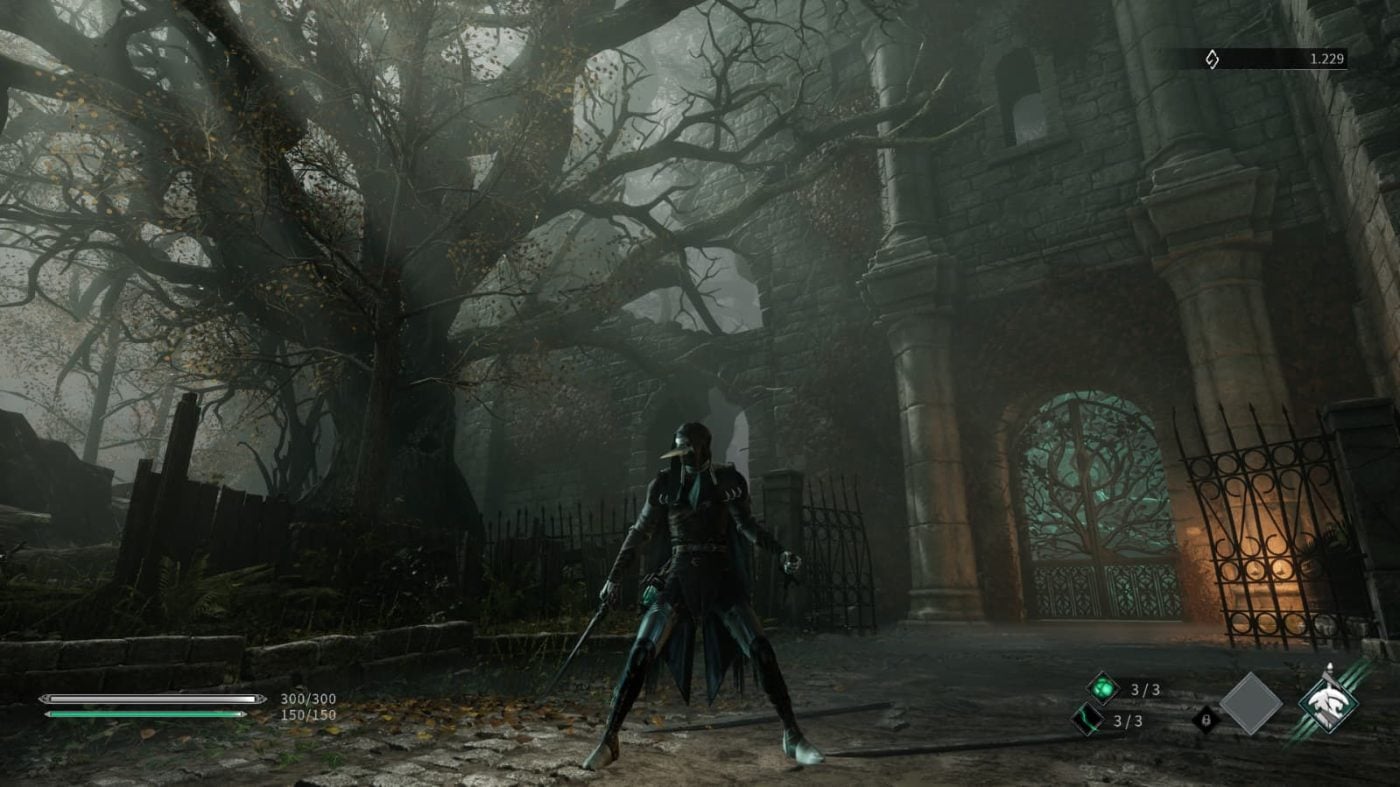

Distinctive and Immersive Sound Design
The sound design in Thymesia is central to shaping the game’s atmosphere, amplifying its dark-fantasy tone and the relentless tension that defines its gameplay. Audio here is far more than a support for visuals – it acts as a narrative tool in its own right, conveying vital information about enemies, warning of impending danger, and accentuating key story moments. The soundtrack weaves together ambient textures, brooding tones, and sparse yet evocative orchestration. Minimalist by design, the music never overwhelms, instead subtly underscoring exploration and combat, gradually ratcheting up the tension. During boss encounters, it swells to dramatic peaks, highlighting the intensity of each confrontation. The careful restraint in melody helps sustain a constant sense of menace and peril – a deliberate, highly effective choice.
Environmental sound design is among the game’s standout features. Footsteps clanging across metal, creaking structures, whispering winds, dripping water, and unsettling hisses in contaminated areas bring the world vividly to life, casting a constant sense of unease. These audio cues also provide vital spatial information, allowing players to judge the distance and direction of threats, heightening tension and demanding constant attention. Enemy sounds are crafted with equal precision: each creature emits distinctive calls that reveal its presence and often hint at its intentions. Bosses, in particular, are accompanied by deep, distorted tones that foreshadow their deadliest attacks, offering essential auditory clues for survival.
Voice acting is also well executed. While the protagonist, Corvus, remains silent, the voices of NPCs and key antagonists add depth to the narrative without slowing the game’s pace. Sounds of pain, labored breathing, and distorted communication further convey the suffering and corruption that permeate the world, enhancing its believability.
From a technical standpoint, the audio mix is exceptionally well balanced. Environmental sounds, the soundtrack, and enemy audio blend seamlessly, providing clarity and precise spatial awareness. Occasional loops in larger areas can feel repetitive, but such moments are rare and do little to disrupt the pervasive sense of tension.
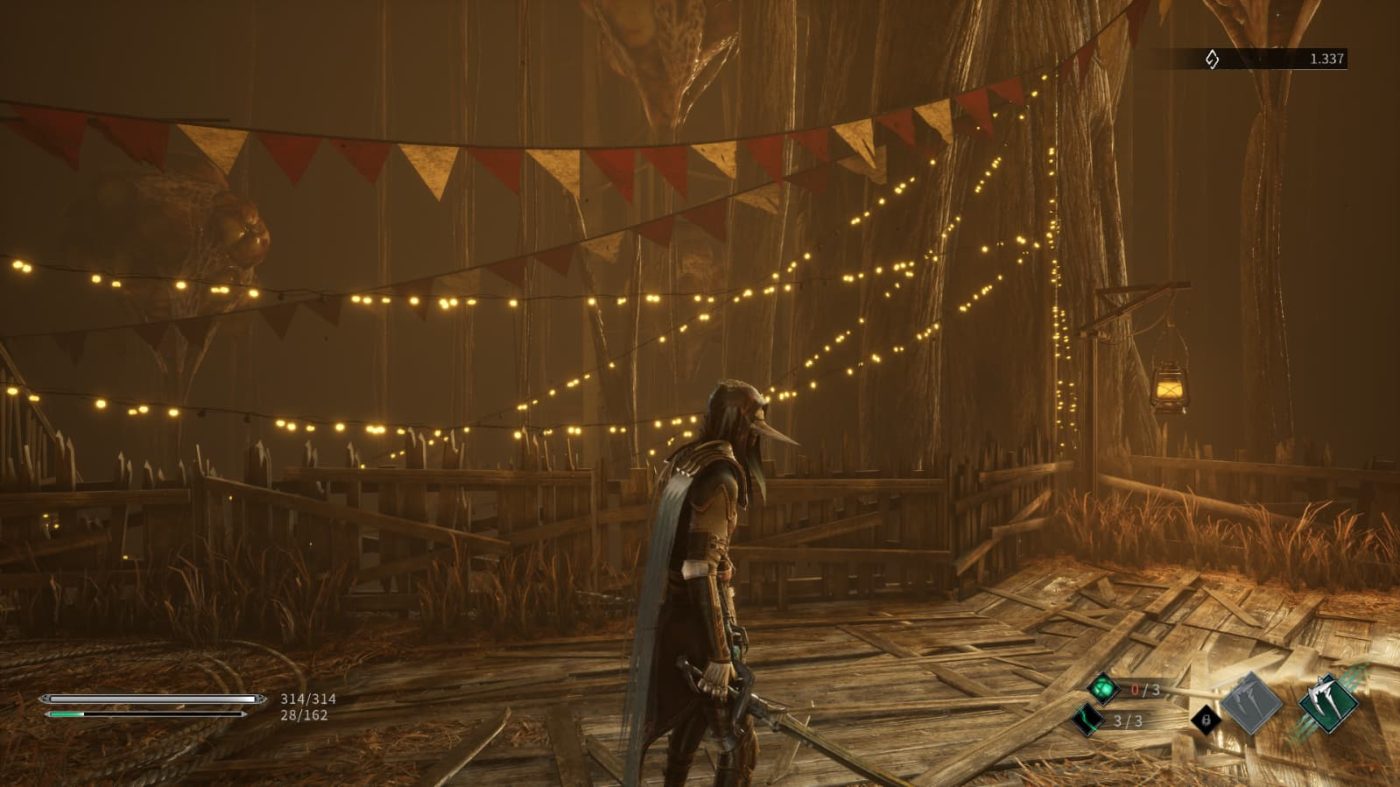

A Living, Breathing World That Shapes Every Action
In Thymesia, worldbuilding and gameplay are deeply intertwined, each shaping the player’s journey and drawing them into a dark, hostile universe that is both narratively and mechanically cohesive. Corvus navigates a decaying realm, ravaged by a mysterious disease that has twisted its inhabitants and corrupted the environment. Every area tells a story: crumbling castles, toxic forests, abandoned laboratories, and corrupted cities are meticulously crafted to reflect societal decay, the brutality of the plague, and the world’s pervasive desolation.
Environmental detail is a central storytelling tool, letting players grasp the narrative through the world itself rather than relying on linear exposition or extended dialogue. The visual and stylistic consistency is striking: muted lighting, shadowed tones, cool color palettes, and sharp accents of red or yellow create a foreboding atmosphere that radiates danger and oppression. Every enemy, boss, and location reinforces the worldbuilding, with careful aesthetic choices heightening the sense of a living – but profoundly disturbed and hostile – realm. The environment continuously conveys tension, isolation, and imminent threat, forming the backbone of the game’s immersive experience.
The gameplay builds on familiar Soulslike mechanics while introducing innovations that give it a distinct identity. Combat is fluid and tactical, highlighting seamless attack chains, precise dodges, well-timed parries, and the strategic use of special abilities powered by Corvus’s “corruption” meter. This system links both offensive and defensive skills to his energy, forcing players to carefully assess risk before deploying their most devastating moves.
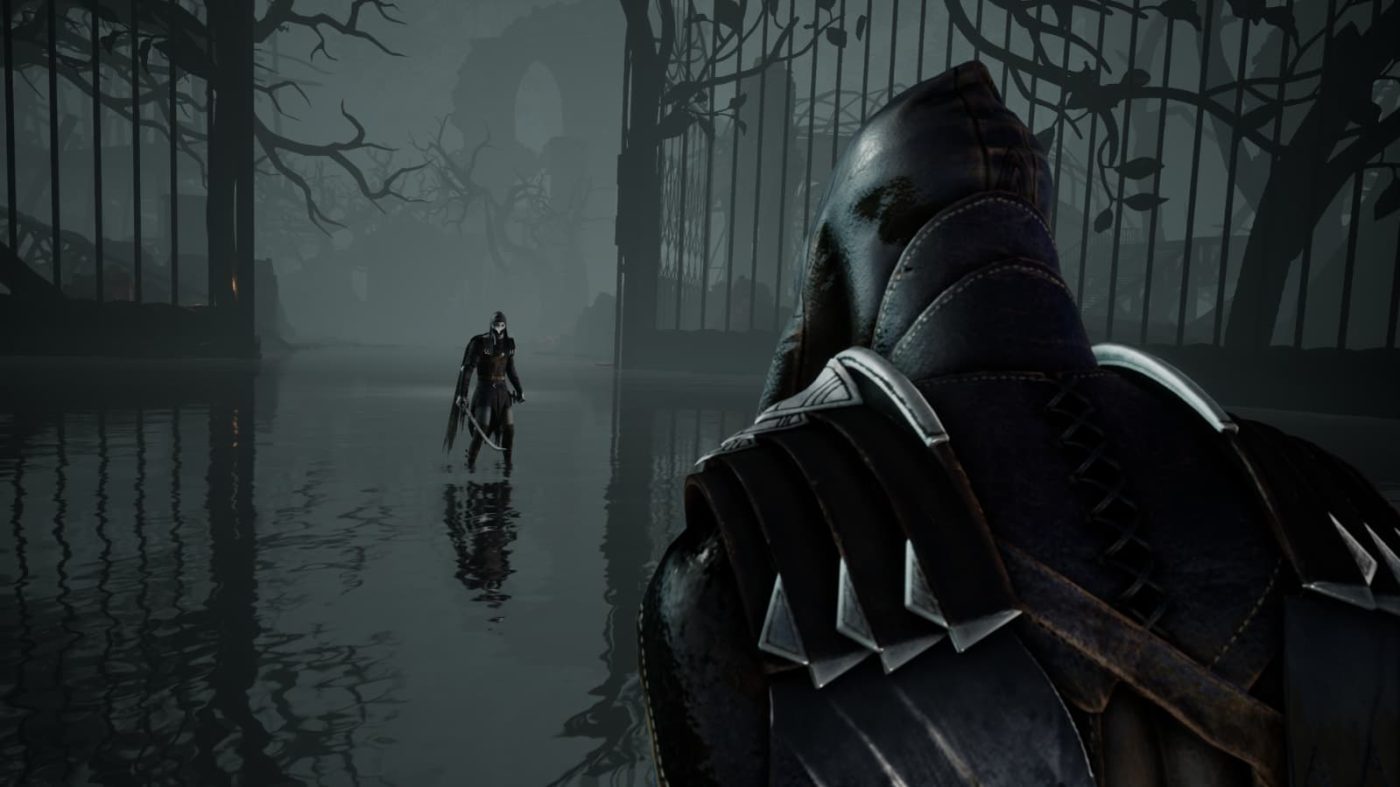

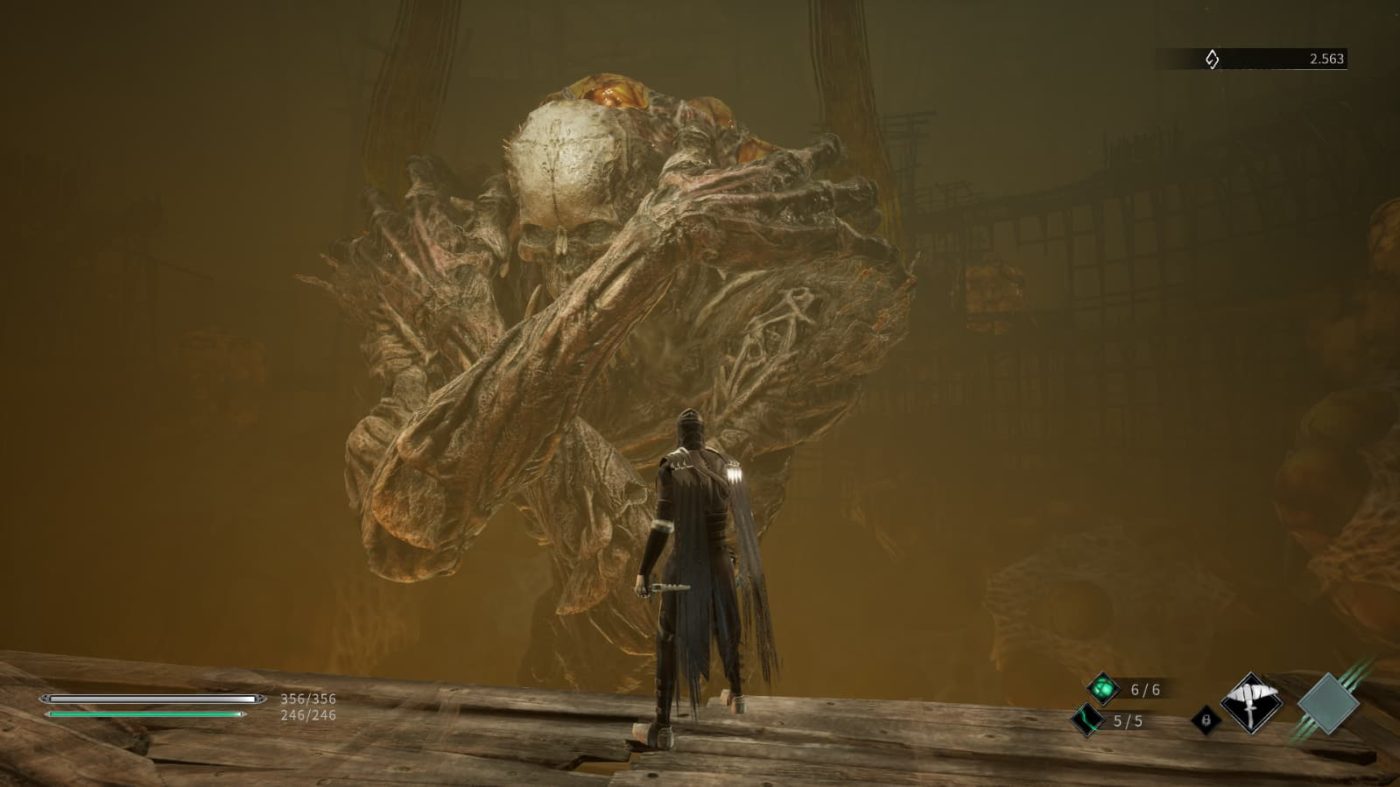
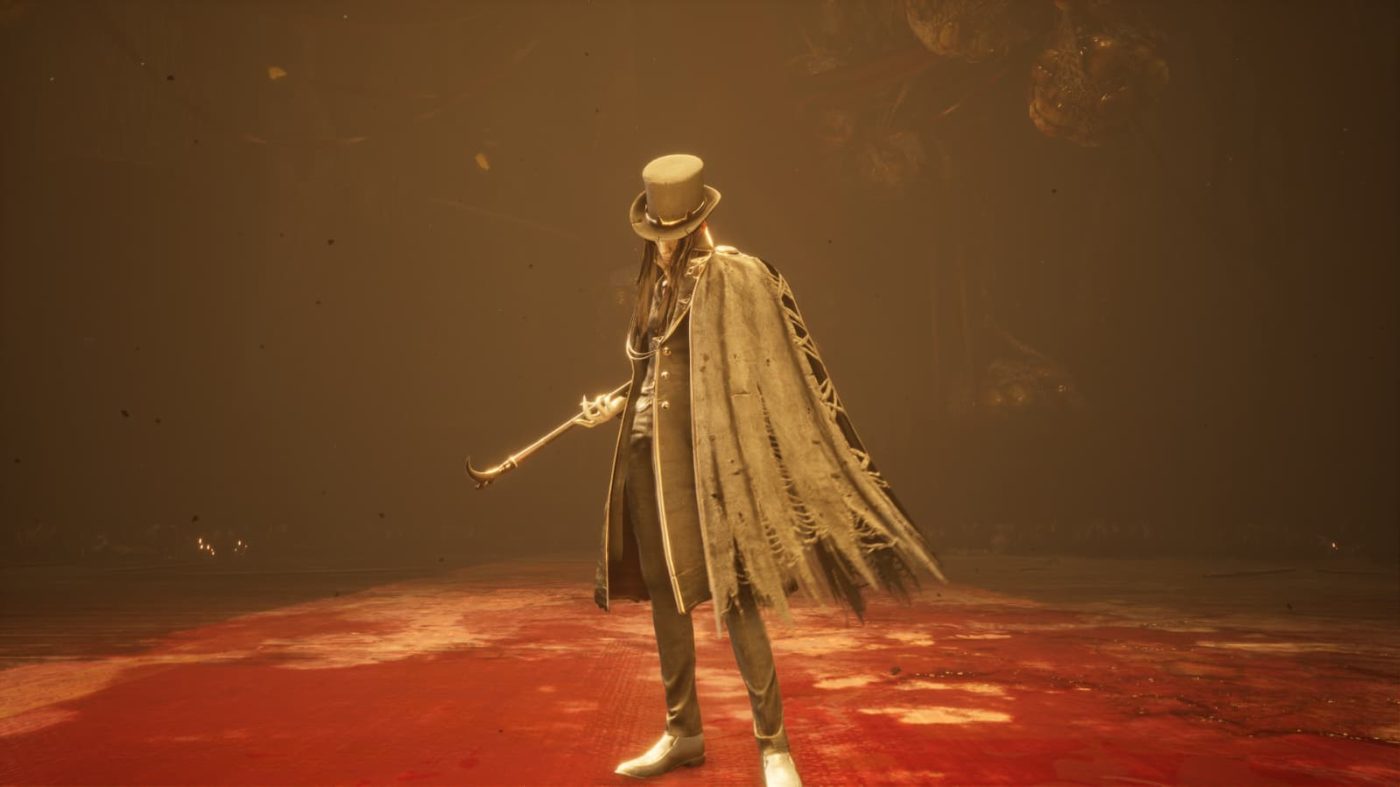
Thymesia features a diverse roster of enemies that demands keen observation, pattern recognition, and strategic thinking. From routine minions to formidable bosses, each foe boasts distinct attacks and movement patterns that reflect its visual design, allowing players to anticipate threats and plan their approach. Boss encounters, in particular, represent the apex of gameplay, testing skill, resource management, and mastery of enemy behavior. Crafting and upgrades add further depth. By collecting materials and using crystals or fragments, players can enhance weapons, armor, and abilities, shaping their playstyle to suit personal preferences. This system not only extends the game’s longevity but also makes progression feel meaningful, turning every encounter into an opportunity to refine equipment and experiment with new strategies.
The level design strikes a careful balance between exploration and intense challenge. Open areas encourage players to survey their surroundings and devise tactics, while narrow corridors and hazardous zones heighten tension and risk. Pacing is meticulously tuned to sustain suspense, alternating between moments of deceptive calm and sudden spikes in difficulty, hallmarks of boss fights and elite enemy encounters.
In Thymesia, worldbuilding and gameplay are inseparable, constantly interacting to shape the player’s experience. Environment design, enemy variety, and the strategic use of abilities converge to create a cohesive and immersive world. Every step, every encounter, and every upgrade choice contributes to a living, hostile realm that resonates with the narrative. The seamless interplay of exploration, combat, and discovery transforms the game world into a singular experience, where challenge is never arbitrary but an essential facet of the title’s identity.
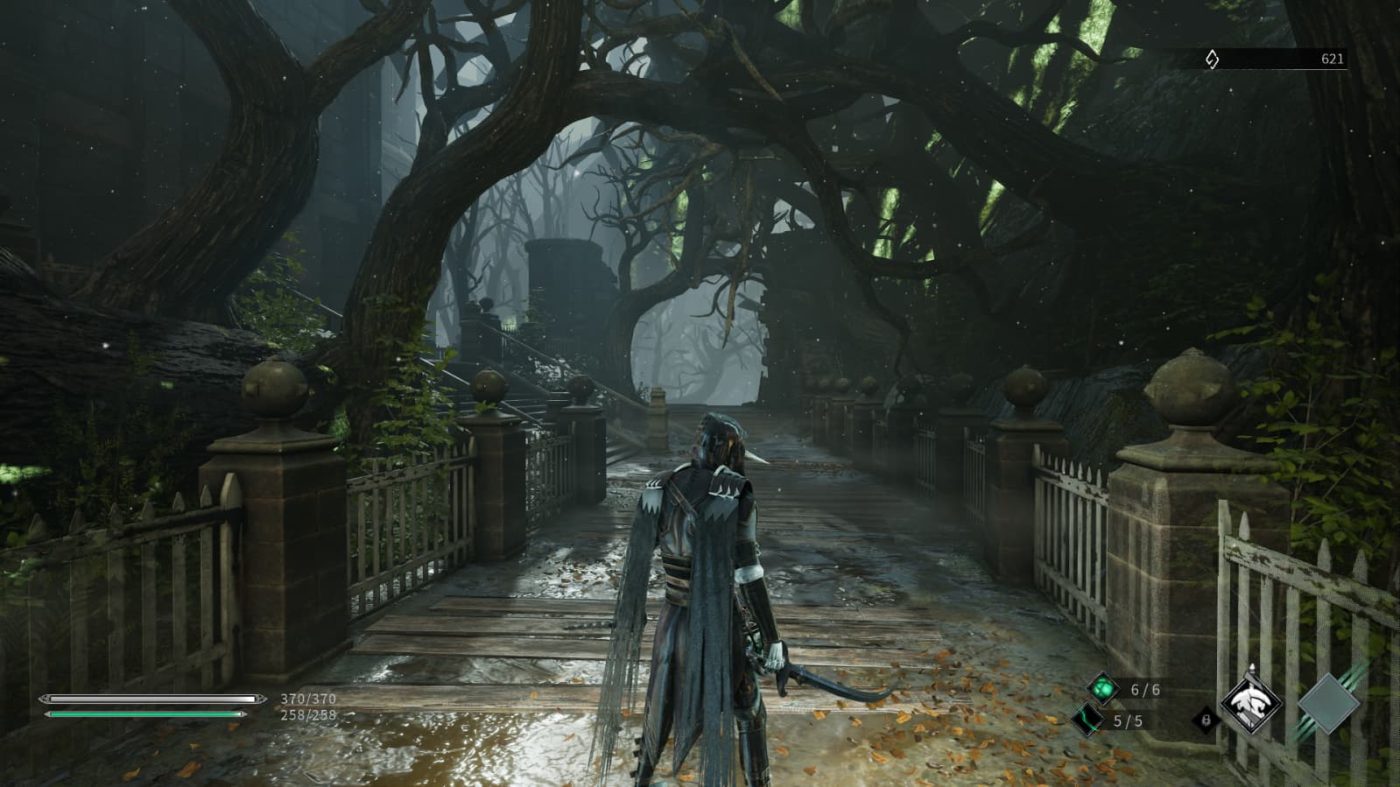

Critical Reception
A critical assessment of Thymesia requires balancing its strengths against the areas where it shows clear limitations, considering both its creative vision and technical execution. Overall, the game stands out in the soulslike genre thanks to its striking visual identity, inventive mechanics, and cohesive worldbuilding, even if it carries some of the imperfections typical of indie productions.
Arguably, the most compelling aspect is the atmosphere. The world of Corvus is dark, dangerous, and meticulously crafted, with disease, corruption, and decay evident in every environmental detail and enemy encounter. Visual consistency, creature design, and the careful use of color and lighting create a constant sense of oppression, further amplified by immersive and effective sound design. The combat system is another major strength. The corruption mechanic – which links the use of abilities to resource management – adds strategic depth and differentiates the game from others in the genre. The variety of attacks, dodges, and upgrades allows players to experiment with multiple combat styles, making each encounter feel both rewarding and customizable.
Enemy and boss design is equally remarkable. Each creature is distinct and intricately detailed, with attack patterns that align perfectly with their appearance, turning every encounter into a memorable and meaningful challenge. Approached with strategy and precision, the game’s difficulty rewards players with a true sense of achievement and personal growth.
Worldbuilding and environmental storytelling further enrich the experience. Through carefully designed locations, scattered clues, and visual details, the narrative unfolds organically, immersing players in the process of piecing together the story.
However, Thymesia is not without its flaws. Technically, despite running on Unreal Engine, distant textures can appear soft, some animations feel stiff, and occasional frame rate drops occur, particularly in complex areas or during intense battles. While not pervasive, these issues can affect the fluidity and precision required by the combat system. Level design, while coherent and functional, can feel linear in places, reducing visual variety and exploration. Some sections grow repetitive, and the initial thrill of discovery wanes after a few hours.
Narratively, the fragmented storytelling approach is immersive but risks being too cryptic for players seeking a clear plot or memorable characters. While evocative, the story of Corvus and the kingdom does not always sustain long-term emotional engagement. Additionally, the challenging difficulty and corruption mechanics may frustrate less experienced players, and the absence of accessibility options or more forgiving modes limits the game’s broader appeal, making it primarily suited to fans of the soulslike genre.
In conclusion, Thymesia is a rewarding experience for those seeking challenge, tension, and deep immersion in a dark, atmospheric world. It offers memorable and satisfying moments for players willing to embrace its demanding gameplay and richly crafted environments, delivering a distinctive and compelling take on the soulslike formula.
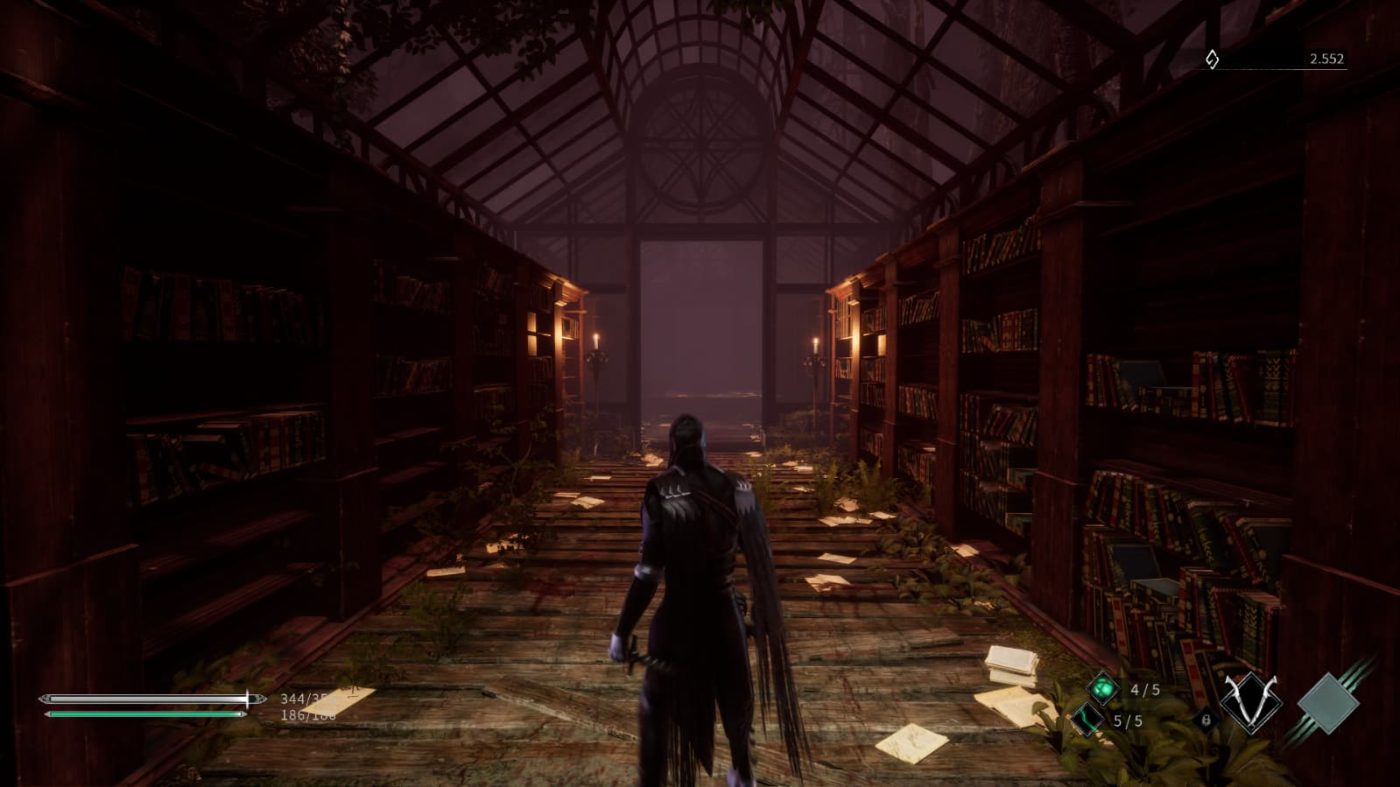
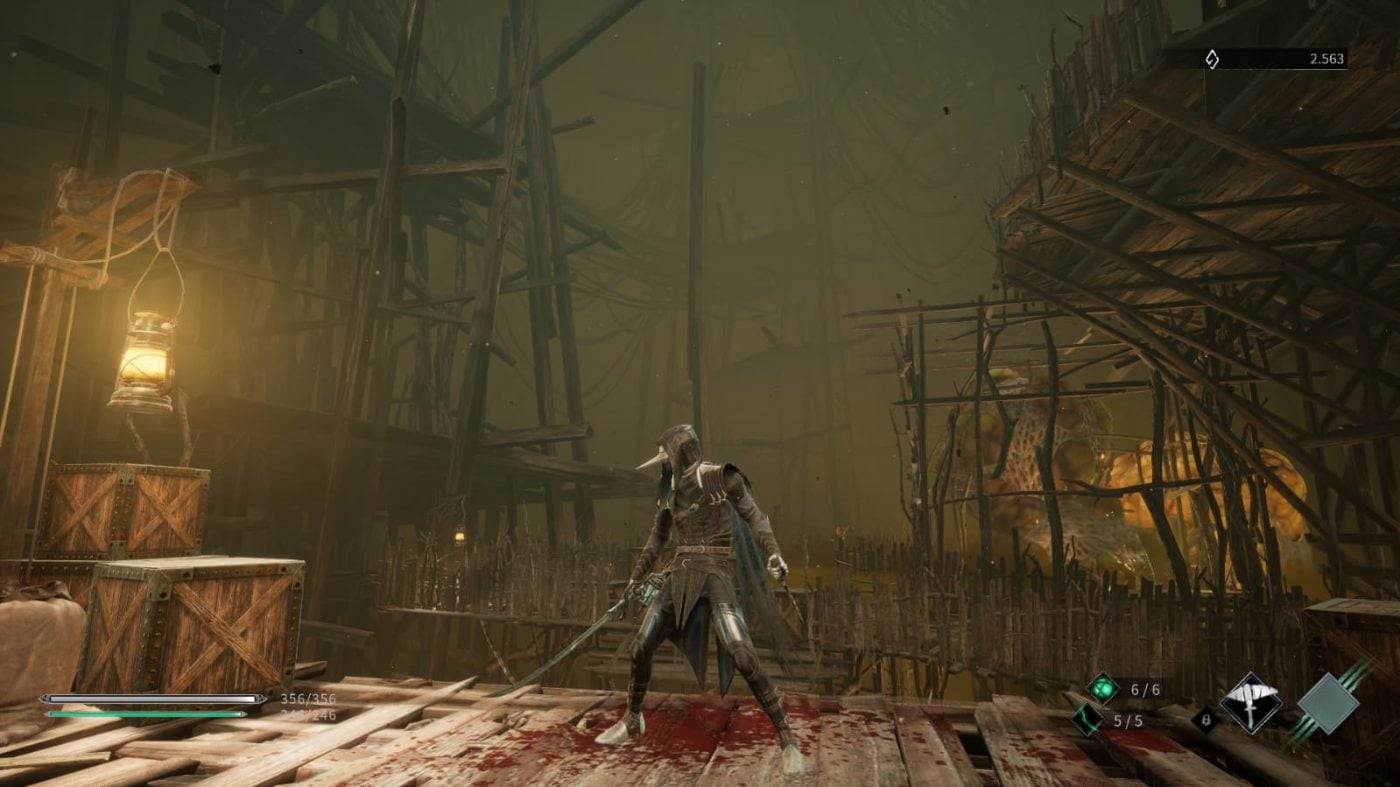
Thymesia
PRO
- Immersive and gripping atmosphere: Decaying environments, twisted creatures, and coherent worldbuilding craft a dark, captivating world.
- Innovative and tactical combat: The corruption mechanic adds strategic depth, making every encounter feel meaningful and engaging.
- Unforgettable boss battles: Challenging, well-designed fights with recognizable patterns deliver high-tension moments and a strong sense of achievement.
- Impactful sound design: Ambient noises, enemy cries, and a minimalist soundtrack heighten suspense and draw players deeper into the world.
- Strong and unique identity: While rooted in the soulslike tradition, the game establishes its own distinctive style.
- Flexible progression system: Weapon and ability upgrades, combined with resource management and crafting, offer meaningful player choice and strategy.
CON
- Occasional technical shortcomings: Some textures lack definition, animations can appear stiff, and minor frame rate drops occur in more demanding areas.
- Somewhat linear level design: Certain environments feel restrictive, limiting exploration and diminishing the overall sense of discovery.
- Fragmented storytelling: The cryptic narrative and minimal dialogue may fail to fully engage players seeking a clearer or more emotionally resonant plot.
- Repetitive minor enemies: The reuse of certain enemy types and predictable attack patterns can occasionally reduce tension during secondary encounters.

